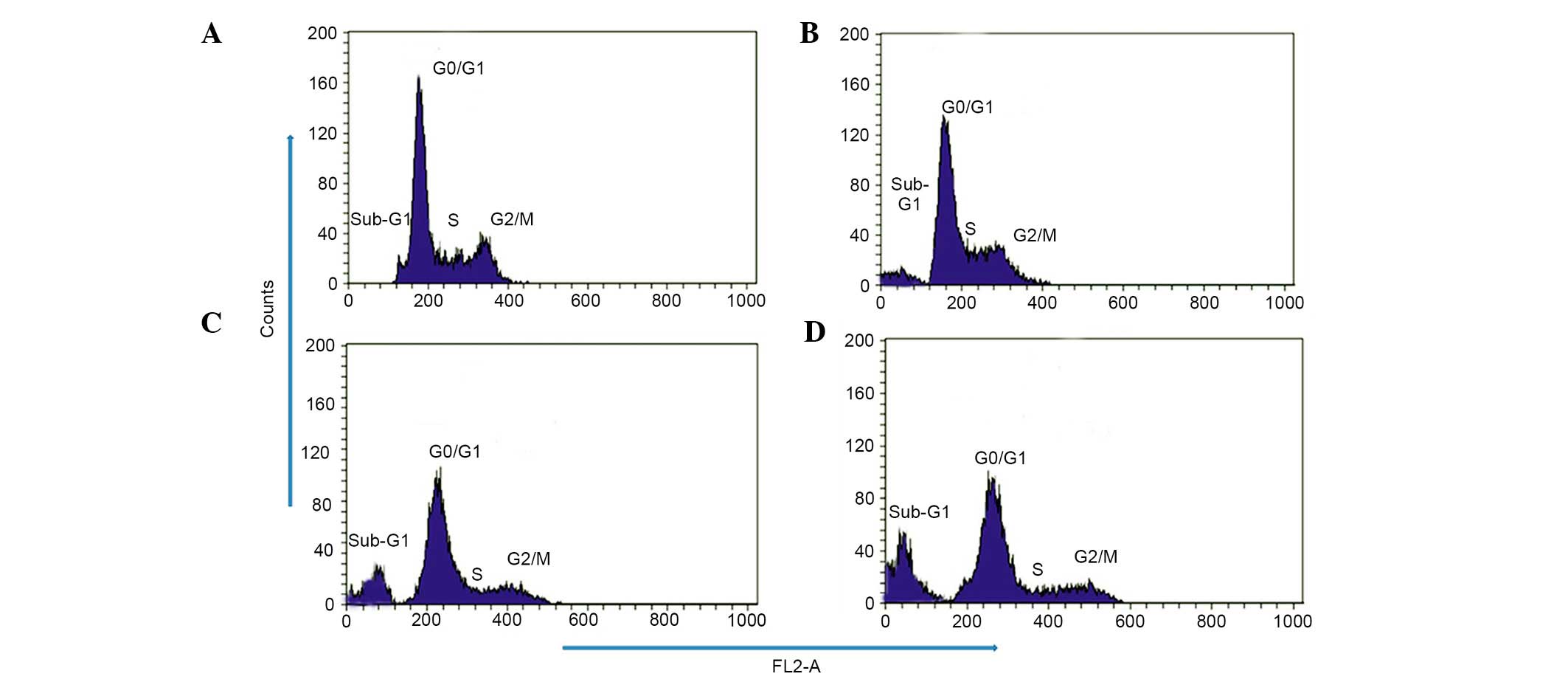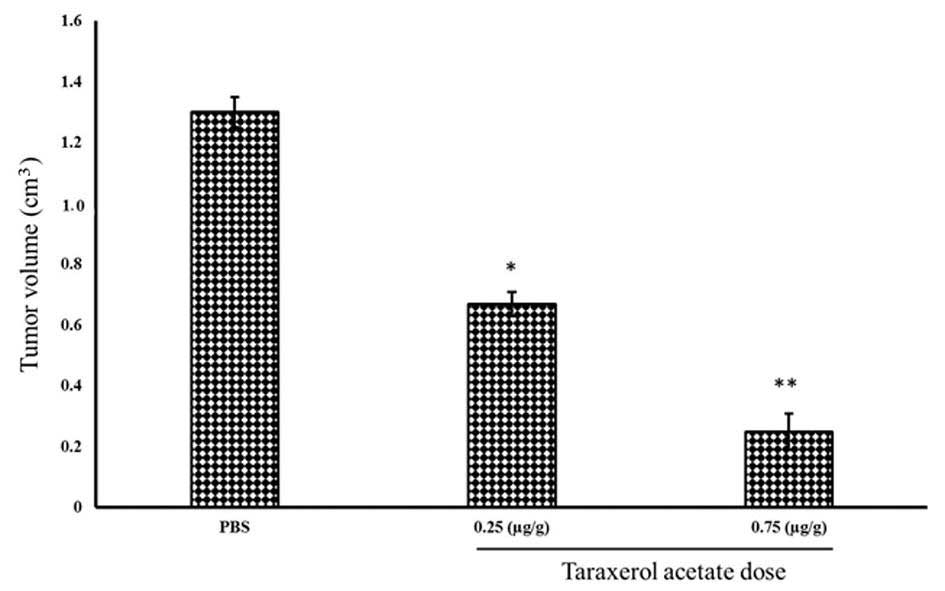Anticancer activity of taraxerol acetate in human glioblastoma cells and a mouse xenograft model via induction of autophagy and apoptotic cell death, cell cycle arrest and inhibition of cell migration
Retraction in: /10.3892/mmr.2021.12100
- Authors:
- Published online on: April 12, 2016 https://doi.org/10.3892/mmr.2016.5105
- Pages: 4541-4548
-
Copyright: © Hong et al. This is an open access article distributed under the terms of Creative Commons Attribution License.
Metrics: Total
Views: 0 (Spandidos Publications: | PMC Statistics: )
Total PDF Downloads: 0 (Spandidos Publications: | PMC Statistics: )
Abstract
The aim of the present study was to investigate the in vitro and in vivo anticancer and apoptotic effects of taraxerol acetate in U87 human glioblastoma cells. The effects on cell cycle phase distribution, cell cycle-associated proteins, autophagy, DNA fragmentation and cell migration were assessed. Cell viability was determined using the MTT assay, and phase contrast and fluorescence microscopy was utilized to determine the viability and apoptotic morphological features of the U87 cells. Flow cytometry using propidium iodide and Annexin V-fluorescein isothiocyanate demonstrated the effect of taraxerol acetate on the cell cycle phase distribution and apoptosis induction. Western blot analysis was performed to investigate the effect of the taraxerol acetate on cell cycle‑associated proteins and autophagy‑linked LC3B‑II proteins. The results demonstrated that taraxerol acetate induced dose‑ and time‑dependent cytotoxic effects in the U87 cells. Apoptotic induction following taraxerol acetate treatment was observed and the percentage of apoptotic cells increased from 7.3% in the control cells, to 16.1, 44.1 and 76.7% in the 10, 50 and 150 µM taraxerol acetate‑treated cells, respectively. Furthermore, taraxerol acetate treatment led to sub‑G1 cell cycle arrest with a corresponding decrease in the number of S‑phase cells. DNA fragments were observed as a result of the gel electrophoresis experiment following taraxerol acetate treatment. To investigate the inhibitory effects of taraxerol acetate on the migration of U87 cell, a wound healing assay was conducted. The number of cells that migrated to the scratched area decreased significantly following treatment with taraxerol acetate. In addition, taraxerol acetate inhibited tumor growth in a mouse xenograft model. Administration of 0.25 and 0.75 µg/g taraxerol acetate reduced the tumor weight from 1.2 g in the phosphate‑buffered saline (PBS)‑treated group (control) to 0.81 and 0.42 g, respectively. Similarly, 0.25 and 0.75 µg/g taraxerol acetate injection reduced the tumor volume from 1.3 cm3 in the PBS-treated group (control) to 0.67 and 0.25 cm3, respectively.





















